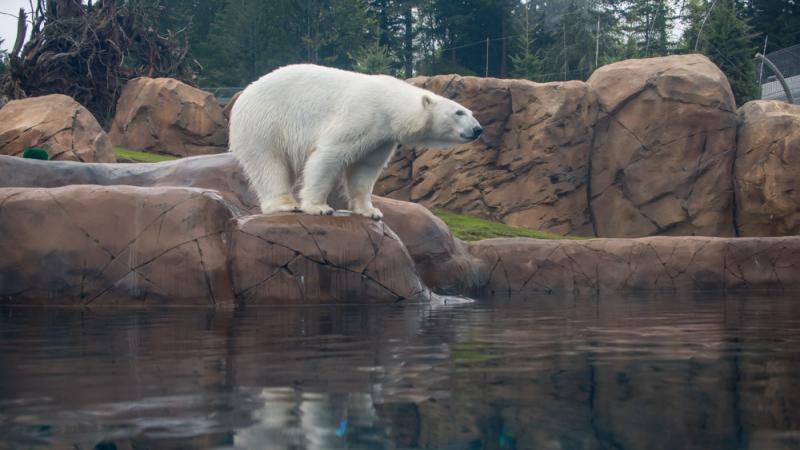Research at the zoo
Oregon Zoo animals have helped answer a wide range of conservation questions. In the process, they're giving scientists the tools they need to protect wildlife in a rapidly changing world.

Everything we learn here is applied out there
How much energy does a polar bear expend while swimming? Can a dog detect the presence of turtles simply by sniffing water? What's the gentlest way to fit a GPS transmitter on a condor?
These are a few of the field conservation questions that Oregon Zoo animals have helped answer. In the process, they're giving scientists the tools they need to protect wildlife in a rapidly changing world.
Zoo animals can reveal insights that are often challenging and sometimes impossible to obtain in the wild. For that reason, zoo animals are more than ambassadors for their wild counterparts; they're aiding in their survival. The Oregon Zoo collaborates with universities, governments and other zoos to fill gaps in scientific knowledge on short- and long-term research projects.
Featured projects
Polar bear energetics
In collaboration with the U.S. Geological Survey (USGS), keepers trained polar bear Tasul to wear a collar that recorded data about her movements. Scientists videotaped her wearing this "accelerometer" collar and matched the electronic signals with her behavior. Once the signals are calibrated, identical collars can be placed on wild bears, allowing researchers to remotely study their energy usage.
Borneo elephant genetics
Population and Conservation Genetics Group sought blood samples from Chendra, the western hemisphere's only Borneo elephant, for a study on the impact of fragmentation on the patterns of genetic diversity, social structure, and dispersal of Borneo elephants. Borneo elephants—the world's smallest—are critically endangered, and believed to be genetically distinct from other Asian elephants.
Steller sea lion diet
Determining the wild diet of Steller sea lions is important to understanding their impact on endangered salmon runs. Feeding zoo sea lions a diet of fish marked with tiny glass beads allowed researchers to develop a new technique that uses near-infrared spectroscopy to determine the species of fish in sea lion scat.
Condor satellite tracking
The USGS and U.S. Fish and Wildlife Service fitted an Oregon Zoo turkey vulture with a non-invasive leg-loop harness to test the method for use with California condors. The technique may provide condor field biologists with a new tool and facilitate the testing of technologies for tracking large birds (e.g., cell phone/GPS) that require slightly heavier transmitters.
Turtle-sniffing dogs
The Oregon Wildlife Institute (OWI) trained conservation detector dogs to recognize the odor of western pond turtles and their nests for the purpose of canine-assisted nest searches. The Oregon Zoo supplied water samples containing scent of the target species. The dogs are trained to distinguish the target scent from other odors using operant conditioning procedures.
Polar bear diet
Polar bear siblings Tasul and Conrad participated in a USGS study that will help biologists measure the proportion of land and marine-based prey in wild polar bear diet. The study will assist researchers in understanding how wild polar bears adapt to changes in their food supply changes.

